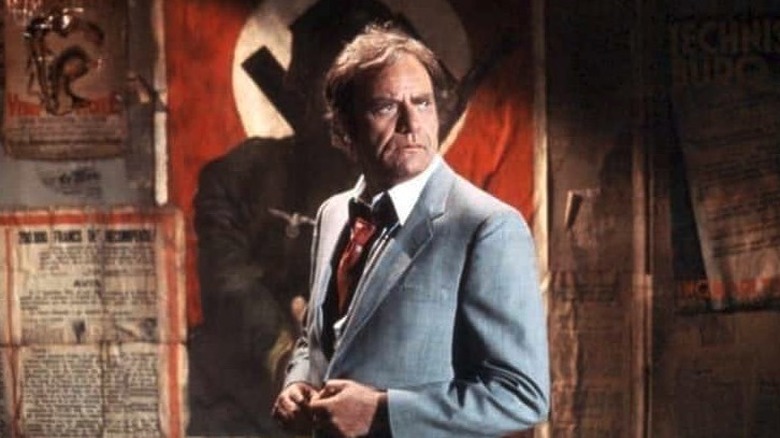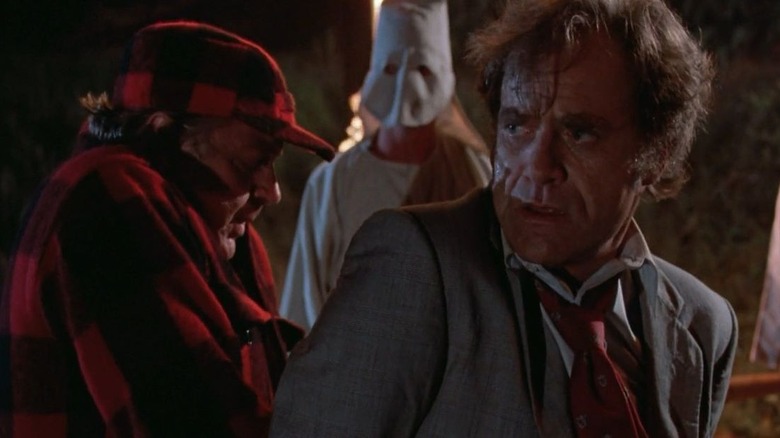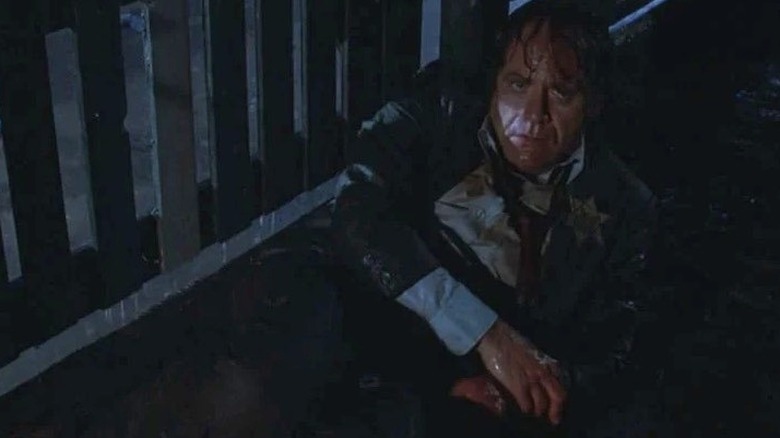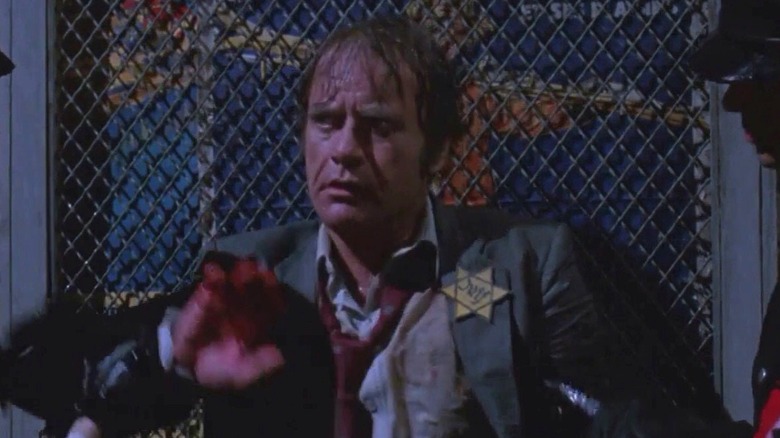The Twilight Zone Movie Curse Explained
We may receive a commission on purchases made from links.
"Warning: this article contains material about the death of children. Please be cautious."
Everyone has heard of movie curses before. Bad things happen on set and boom, everyone calls it a curse. (It's happened on stage as well. There is a reason people don't say "Macbeth" in a theater.) One of the most famous movie curses is the one attached to "The Twilight Zone" movie.
1983's "Twilight Zone: The Movie" was inspired by the original TV series. It scared the crap out of me back then, and part of that was the supposed "curse" on the film set. I didn't know much about it as a little kid, other than whispers on the playground. Those whispers were about the three deaths on set, but I had no idea what led up to them. Once you learn the details, it becomes less of a curse, and more of a story about terrible and illegal negligence.
"Twilight Zone: The Movie" was an anthology film that had four stories. George Miller directed the "Nightmare at 20,000 Feet" segment, while Steven Spielberg helmed the "Kick the Can" piece. Joe Dante directed "It's a Good Life," and John Landis took on the infamous "Time Out" tale. The Miller, Spielberg, and Dante stories were based on episodes of the TV series, but Landis' segment was only very loosely based on the episode "A Quality of Mercy."
Here's what happened, and it's awful
"Time Out" is a story about a man who is spouting awful slurs against Jewish, Black, and Asian people. As a result, he finds himself facing situations where he is thought to be a Black man in rural Alabama in the 1950s facing the Ku Klux Klan, a Jewish man in Nazi-occupied France, and a Vietnamese man fleeing American soldiers during the Vietnam War.
It's also Landis' segment of the film where the tragedy happened. The scene in question was part of the Vietnam sequence. Star Vic Morrow ("Combat") and child actors Renee Shin-Yi Chen and Myca Dinh Lee were tragically killed by a helicopter. Morrow's character was supposed to be rescuing a pair of Vietnamese children during an air raid. The person flying the helicopter was Dorcey Wingo, who was a Vietnam veteran, now also a veteran of the film world. During the shoot, there was pyrotechnics going off to simulate explosions. One of the fireballs hit the helicopter and sent it down into the river where the actors were. What's coming next is a description of what happened, and it's very disturbing.
The accident that changed film safety
Six-year-old Renee was crushed by the right skid of the helicopter. It then fell over, and the blade killed Morrow and seven-year-old Myca. The children had been hired illegally and were not working according to child labor laws. The studio claimed that this was an accident. The suit did go to trial in Los Angeles in 1985, where Landis and the other defendants were acquitted of charges. His career went on, and if you're now seething with rage, you are not alone, I assure you.
Laws began to change after the incident, according to an article on Slate. John Silvia, Warner Bros. vice president at the time, got a committee together to work on creating standards of safety for things like this with the filmmaking unions and guilds, creating safety bulletins that have been going on for a while. As we know, however, accidents still happen on set, from a stuntman being killed in a crash on the set of "Airwolf," to Brandon Lee's death on "The Crow," to the recent death of cinematographer Halyna Hutchins on the set of "Rust."
This was a terrible tragedy. Calling it a curse seems to cheapen the deaths of these three people when the accident could have been prevented.
Why do we jump straight to curses?
I spoke to Dr. Travis Langley, a psychologist, professor, and the author of "Batman and Psychology: A Dark and Stormy Knight," as well as the editor of the PsychGeeks' series about why we jump right to curses for this sort of thing. "One horrible accident is not enough of a pattern to call it cursed," he said:
"It resulted from reckless decisions and human errors during production. Even if curses existed, that is not one. Live ammo got used on that set! Choices were made that should not have been made. Children should not have been on that set at all during such a dangerous stunt. Spectacular tragedy does not require a spectacular explanation, and yet we feel like it should. People want cause to transcend effect. Our brains are ready to spot patterns, for many important reasons, but that ready state also prepares us to perceive patterns where they do not exist. So we sometimes see curses and conspiracies where none exist, and once we're looking for them, our need for belief confirmation makes us more ready to fit new information into those patterns and less likely to accept contradictions."
I also spoke to Dr. Janina Scarlet, psychologist and author of "It Shouldn't Be This Way: Learning to Accept the Things You Just Can't Change." She said:
"When things feel out of our control, we might look for an explanation. Strange as it might sound, the belief that an object is cursed can make people feel more comfortable than the belief that sometimes bad things just happen. When we think something is cursed, such as an item of clothing or a location, if something bad happens, we accept it, believing that so long as we avoid the cursed object or a location, we are safe. On the other hand, if something bad happens when we didn't expect it, we are likely to feel less prepared, less in control, and more vulnerable to danger."
As awful as this was, it wasn't a curse. It was a call for changes in the law, which were made. If there is any comfort to be taken here, it's that something was done to make sets safer. It just shouldn't have come at the expense of three lives.



